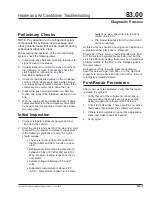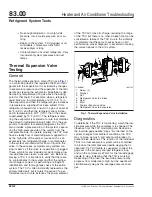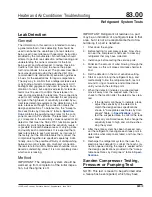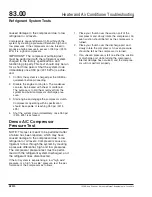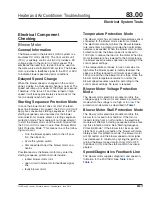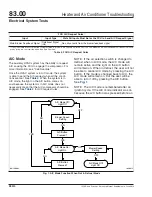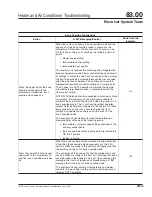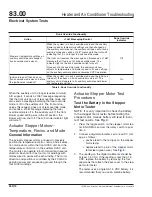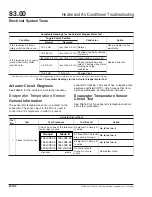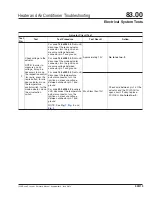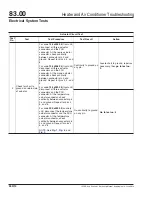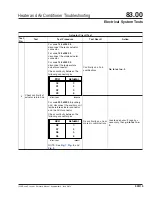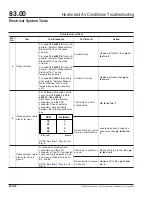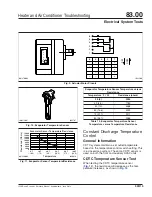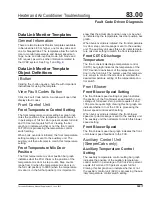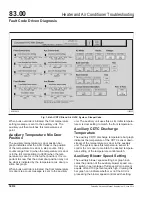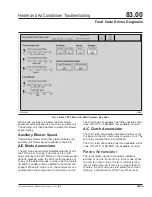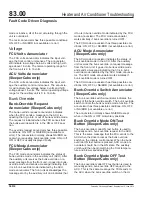
Bunk Override Functionality
Action
J1587 Messaging/Control
Bunk Override
Indicator
Press the upper half of the bunk
override switch again to the
momentary ON position; bunk
override was already on
When the system is already in bunk override mode and the
upper half of the bunk override switch is pressed to the
momentary ON position, the front control unit sends a new
J1587 to the auxiliary unit containing the following new set
points:
•
blower speed setting
•
temperature control setting
•
temperature door position
The auxiliary unit receives this message and disregards the
previous temperature and blower control settings and adjusts
its settings to match the new front unit settings (this assumes
the front blower setting or temperature setting was changed
after the initial bunk override). The auxiliary unit uses the
temperature control door position setting as a starting point.
Then it goes into CDTC operation to maintain the new de-
sired temperature. Blower speed is adjusted to match the
front control setting.
NOTE: With DataLink Monitor connected to
some early blend
air systems
, the auxiliary unit will continuously update its
control settings to match the front unit when the system is in
bunk override mode. This is not how the system operates
without DataLink Monitor connected to the vehicle. On these
early systems you will not be able to change the front
settings and update the auxiliary unit with a press of the
bunk override switch.
The auxiliary unit will maintain the new temperature and
blower settings until one of the following occurs:
•
temperature or blower speed settings changed on the
auxiliary control panel
•
the bunk override switch is pressed to the momentary
ON or off position
•
ignition is cycled
On
Press the lower half of bunk over-
ride switch to the momentary off
position; bunk override mode was
on
When the bunk override switch is pressed to the momentary
off position (bunk override mode previously on), the FCU
sends a J1587 message to the auxiliary unit requesting that
the auxiliary unit go out of bunk override mode.
The auxiliary unit then goes out of bunk override mode and
sends a J1587 message to the front unit indicating that bunk
override mode in the auxiliary unit is off. Upon receiving this
message, the front unit responds by broadcasting a J1587
message that it too is out of bunk override mode.
The auxiliary unit now adjusts its temperature and blower
speed to its own settings on the auxiliary control panel and
resumes CDTC operation.
Off
Heater and Air Conditioner Troubleshooting
83.00
Electrical System Tests
122SD and Coronado Workshop Manual, Supplement 9, June 2014
330/9


